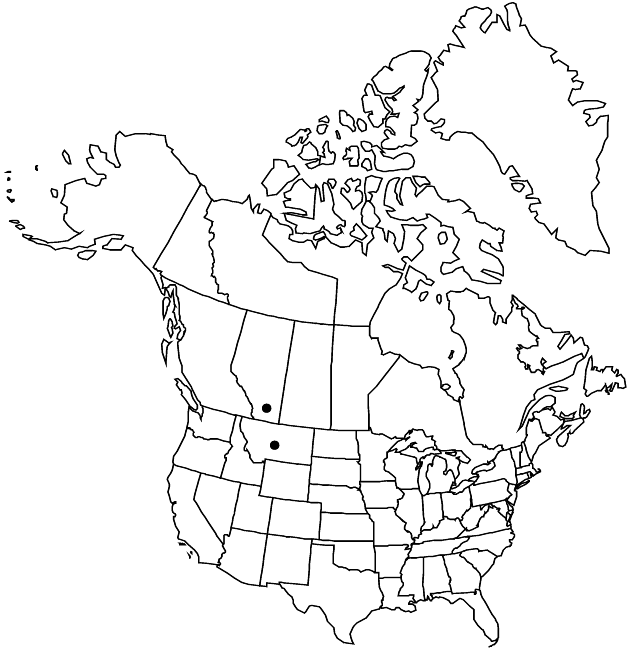Difference between revisions of "Erigeron lackschewitzii"
Madroño 30: 245, fig. 1. 1983.
imported>Volume Importer |
imported>Volume Importer |
||
| Line 51: | Line 51: | ||
|publication year=1983 | |publication year=1983 | ||
|special status=Endemic | |special status=Endemic | ||
| − | |source xml=https:// | + | |source xml=https://bitbucket.org/aafc-mbb/fna-data-curation/src/2e0870ddd59836b60bcf96646a41e87ea5a5943a/coarse_grained_fna_xml/V19-20-21/V20_624.xml |
|tribe=Asteraceae tribe Astereae | |tribe=Asteraceae tribe Astereae | ||
|genus=Erigeron | |genus=Erigeron | ||
Latest revision as of 21:04, 5 November 2020
Perennials, 3.5–8 cm; taprooted, caudices simple or branched, relatively long, woody. Stems erect (scapiform), loosely white lanate-villous, sometimes sparsely minutely glandular. Leaves basal (persistent) and cauline (leaf bases broadened or not, not thickened and whitish-indurate); basal blades linear-oblanceolate to narrowly oblanceolate, 20–60 × 1.2–3 mm, cauline (on proximal 1/2 of stems) similar to basal or slightly reduced, margins entire (apices acute), adaxial faces loosely strigose to villous (or hairs mixed, appressed and spreading), abaxial glabrate, eglandular. Heads 1. Involucres 6–8 × 12–17 mm. Phyllaries in 3 series, densely white-villous (hairs sometimes with blackish purple cross walls), densely minutely glandular. Ray florets 30–68; corollas purple to lavender, 8–11 mm, laminae coiling. Disc corollas 3.5–4.3 mm. Cypselae 2.3–2.8 mm, 2-nerved, faces strigose; pappi: outer of setae and scales, inner of 15–24 bristles.
Phenology: Flowering Jul–Aug.
Habitat: Rocky slopes and ridges, terraces, talus, dry meadows, usually calcareous
Elevation: 2200–2500 m
Discussion
Erigeron lackschewitzii is closely similar to E. ochroleucus and perhaps derived from it.
Selected References
None.
